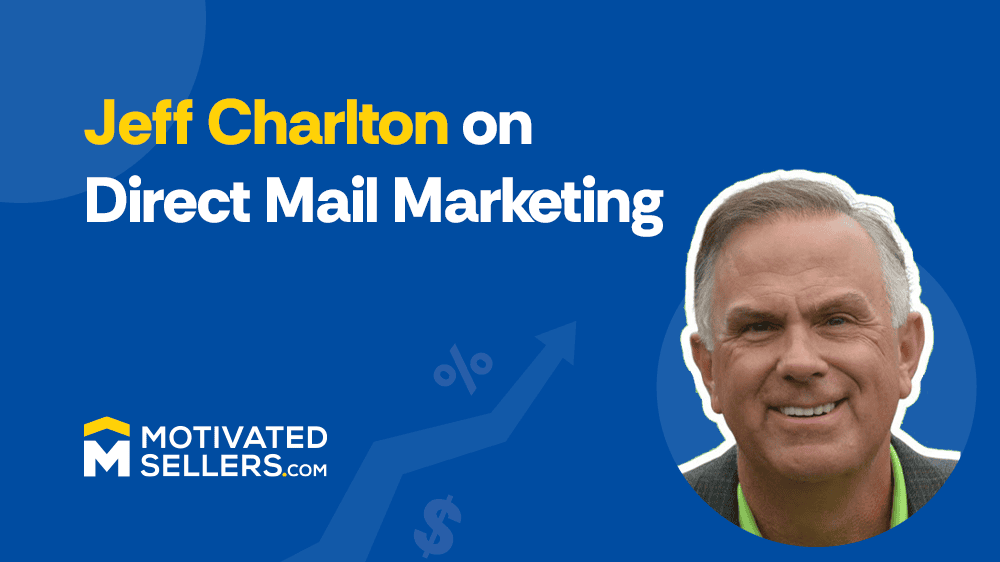

Today our guest is Jeff Charlton from Saint Louis, Missouri. Jeff has been a civil engineer by profession and entrepreneur by heart. Jeff worked for corporate America (Proctor & Gamble) for a couple of years before learning that grass is not greener in corporate America and he went back to the entrepreneurship path.
I had a unique opportunity to join a small printing company as a salesman, with the long-term goal of acquiring the business once the owner retired. However, the deal ultimately fell through, and after a few years, I chose to walk away. Although I had earned a substantial income during that time, I decided to leave it behind.
At the same time, I got divorced and had to start over with nothing.
Back in my basement in 1992, I started Graphics Connection Group, where I acted as a print broker.
I got started in real estate around that time when I began investing in rental properties as a side business. As I was trying to understand investments, I observed that real estate investors needed leads to acquire off-market properties.
Before the market crashed in 2008, I got into real estate investing and met a guy named Kent Clothier, who runs an organization called “Boardroom.” It was through a collaboration with Kent that we started developing some direct mail for real estate investors.
The growth was slow for five years, but then I figured out the secret, and once I did, the business took off.
I went from a $4 million company to a $31 million company, with 100 employees working on my team. Our plan is to reach $40–45 million this year with continuous growth.
The secret to growth is identifying a niche and being the best in that niche.
At my printing company, we had the best real estate investing direct mail service in the entire United States. We went nationwide, and that’s the secret to scaling any business. We now focus on direct mail for real estate investors, and that’s where all my growth comes from.

Direct mail marketing should be a part of your advertising strategy. PPL and PPC work for some investors, but not all homeowners are tech-savvy. Some folks still prefer old-school methods.
And if you think about it, many people selling their homes aren’t in their 20s. A large portion of the demographic are older adults. They may not search on Google, but they will check their mailbox.
You should use a multi-channel marketing approach to reach your audience across various platforms, including digital, direct mail, and cold calling.
“Marketing is about being in front of someone often enough that when they make a decision, you’re the first one they think about.”
Jeff explains that it takes $5,000–$10,000 per direct mail cycle to get a deal in most areas of the country.
Los Angeles, Dallas, and Phoenix are the three most competitive cities in the United States. There is also a lot of investment activity happening in Miami. Jeff has 2,000 active customers all over the US, but his company rarely works with investors in New York. The reason is that the New York market is saturated, and it requires significant investment to succeed there.
Jeff notices that investors are moving to the Carolinas, where they seem to be doing quite well. The average profit per deal for a successful investor is $20,000.
“Direct mail has staying power. A postcard or letter can sit on a desk for years before it is seen. You might receive a response 12 months after initiating a campaign. A good marketing message can deliver results sooner or later.”

According to the USPS, 98% of homeowners check their mailbox daily. Consumers spend 45 minutes reading magazines, 30 minutes on catalogs, and 25 minutes with direct mail. When someone is reading direct mail, you have their full attention, which gives you the chance to engage. Direct mail also feels more personal than a digital ad. The younger generation also appreciates direct mail.
Most data companies use AI. We also have our AI called “Lucy.” Lucy is trained on actual response data from our mailing campaigns. We try to collect data on most of the pieces we send. (Jeff’s company mails 3 to 4 million pieces each month exclusively for real estate investors, and their data company is called “REI Smart Data.”)
You can give your list to AI, and it will assign a score to that list. For example, with a list of 10,000 records, the AI might exclude 4,000 records so you only market to the people who are ready right now.
What are some of the most common mistakes made by real estate investors when it comes to direct mail marketing?
The biggest mistake is not staying consistent. Marketing is a journey, not a destination. You have to maintain a marketing budget and keep going with persistence.
You can tweak the specifics, but you can’t stop marketing. Spend at least 3 (ideally 6) months to statistically evaluate what’s working in your area. The volume should be about 5,000 pieces per idea or list. Many people don’t mail that much, and their results are unsuccessful.
The second biggest mistake is that people want to have the cheapest campaign, cheapest mailer, and cheapest list. In the real estate investing world, cheapest isn’t the most cost-effective.
Avoid throwing away your money just to save some on the front end. As the quote says, “don’t be penny wise and pound foolish.” Do business with people who know what they are doing. Be specific with your direct mail campaign. Work on your list, and then put your best foot forward.
The third and probably the deadliest mistake is not answering your phone. You’ll be surprised, but 55% of calls made to investors are not answered. Apparently, people who miss calls have a low rate of following up on them. That’s where your direct mail marketing can fail.
Most investors work solo or have a small company with 1–3 people. They cannot answer all calls, especially after office hours. Your limitations are understandable, but make sure you have a system for getting leads answered and following up carefully. Fortune is in the follow-up, and that’s 100% true regardless of what you are selling.
Direct mail is expensive, and if you’re short on money, it won’t work for you. As a general rule, it costs about $0.70 to $1.00 per mailer. The nationwide response rate for Jeff’s company is under 1%. In his experience, most beginners need 40 to 60 leads to close a deal.
Let’s say your sample size is 5,000, and you spend $5,000 to send out those 5,000 mail pieces. If you generate a 1% response, that will yield 50 leads, and from those, you should be able to close one deal. Direct mail marketing itself is quite successful, but it’s incomplete if you don’t follow up or close the deal properly.
Direct mail marketing itself is safe, and there are no TCPA regulations on it. However, buying a list and skip tracing through it is not legal and can get you into trouble.
There are rules if you want to build an extensive investment business. The number one distinction is that you cannot scale while investing part-time. You have to dedicate your entire career to your business. The second important distinction is marketing. Scaling a business requires having an on-demand lead generation system. You need an omnipresent marketing approach to generate a large volume of leads and close many of them.
Given the vast wealth of knowledge available, there is no need for you to reinvent the wheel. Pay money to learn from someone who knows what he’s doing. If I had done some coaching 20 years ago, I would have probably figured it out. So my strategy would be to invest in coaching.
Be a Man of Your Word and Be Responsive
My printing business took off, but it wasn’t a new idea. There wasn’t any innovation. I just delivered what I promised 100% of the time and returned all my calls within 24 hours. I had somebody in my office to answer the phone 24 hours a day when I couldn’t do it.
Jeff is 62 at the time of this interview but has no plans for retiring. He loves coming up with new ideas and testing them. Jeff has invented many of the trends in the direct mail industry. You can reach out to him via reiprintmail.com and schedule a 15-minute free consultation with one of his coaches. That call basically gives you a head start on how to be successful in direct mail marketing. Stay tuned for more interviews with the nation’s top investors and investment advice.
Many investors think of a campaign as dropping off 1,000 pieces of mail in one cycle. That’s not exactly a campaign from the perspective of seasoned investors. It takes 5 to 8 follow-ups before a lead will convert. That’s why a campaign can have 4 to 5 cycles. In real estate terms, a direct mail campaign can include 1,000 pieces mailed every few weeks to the same audience until you achieve the desired response rate.